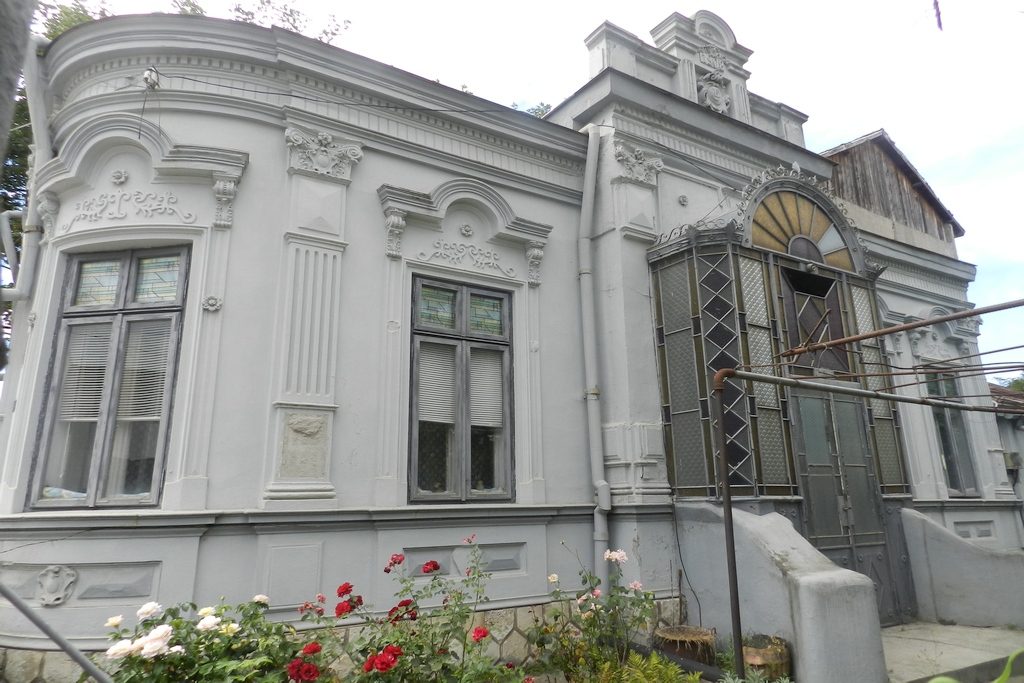

The Memorial House Constantin Tican was built in the year 1908.
Călărași, named in the past, Lichirești and, temporarily, Știrbeiu, is the biggest city of the county and one of the most important municipalities from the Southern development region.
According to the final data of the population census from the year 2011, the municipality Călărași has a population of 65181 inhabitants.
The name of Lichirești dates back probably to the beginning of the first establishment of constant inhabitants on these territories, during the times of the reign of Michael the Brave. Lichirești is mentioned for the first time on a map, on the date of 1700, the cartographic work of the High Steward Constantin Cantacuzino, printed in Italy, at Padua.
The name of Călărași has two possible causes: the first one would be the passing point from the Ottoman Empire in Wallachia was guarded by a head of horsemen, and another one would be the taking over of the extension of the name of the village Călărașii Vechi, because of the fact that from that village and from the city were recruited for the army the best horsemen.
The population was represented at that date by the free people who were occupying with agriculture and with raising animals, Romanians and a small number of Bulgarians and of Turks. A special category was the relay racer people from Călărași, who were executing the courier service on the path Bucharest – Constantinople. There are most likely organized during the period of the prince Constantin Brâncoveanu, the first document kept which reminds them dates back from the date of the 25th of May 1722. From these relay racers from Călărași, who after finishing the service established themselves in the establishment which was situated near their detachment, the village Lichirești starts to become known under the name of “the village of Călărași” or Călărași. On the 1st of May 1734 Călărași is mentioned as a burg, which indicates the fact that the village grew, that it started to build up a commercial life. Different travelers who passed by this place always had agreeable impressions about this burg. In this period Călărași was part of the county of Ialomița, with the residence at Urziceni.
Towards the end of the XVIIIth century improvements with a public character start to be made: besides the old church which existed in the center of the locality, there is built up a central inn and numerous shops, which – together with the houses of some wealthier inhabitants – will give Călărași the aspect of a small town.
The current area of the Călărași was many time either the theater of the wars which took place against the Turkish danger, for defending the bottom land of the Danube. There were fought many battles here, even from the founding of the locality and until the date of the 28th of May 1812 when at Bucharest was signed the peace which would have brought the peace of the inhabitants. Moment of terror were also lived by the people from Călărași in 1821, together with the triggering of the revolution commanded by Tudor Vladimirescu, their difficulties ending only after one year after the ending of the revolution from 1821. Another moment of panic for the inhabitants is represented the new Russian – Turkish war from the years 1828 – 1829. As if the loses caused by the war wouldn’t have been enough, in the years 1828 – 1830 at Călărași started a terrible plague epidemics. In the summer of the year 1831 there begins the cholera, brought by the Turks, fortunately this new epidemic lasted only a couple of days.
Although after 1833 in Călărași also come people with material possibilities, especially bargainers, a small part of them are installed definitely; the most of them were making businesses and leaving the town, not daring to stay in a city situated on a private property, without any future perspectives.
